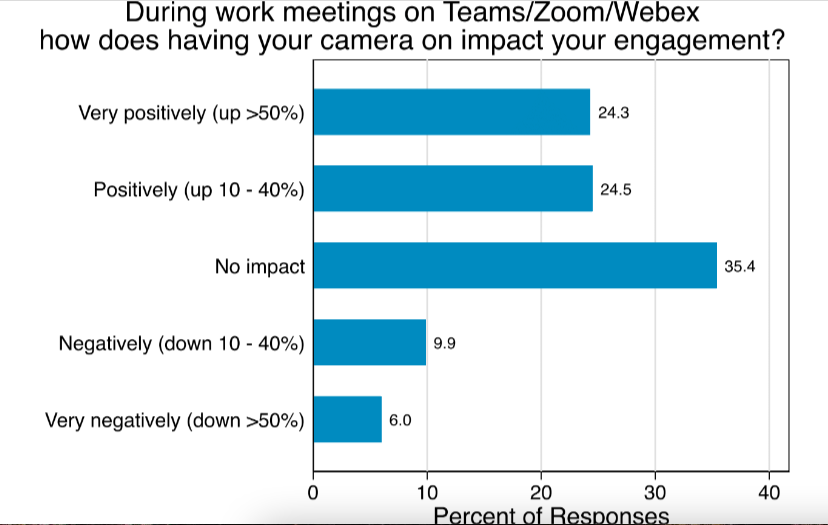Over the past few years, more and more research has been done on the impact of video calls.
In this relatively new way of communicating professionally that crosses borders and introduces communication at scale, there have been divided opinions around what is most effective when it comes to engagement, energy and impact.
One of the most contested debates is whether and how much people should turn on their cameras during video calls. Specifically, does having our video camera turned ‘on’ help people better connect and increase engagement…or not?
Intuitively, having a video camera turned on means we can create a more human connection. With videos turned on, we see someone’s face, their facial expression and if they are framed properly, we see their posture and comportment in the way they interact and react to the conversation underway.
As a recent study by Stanford, ITAM and University of Chicago presents, 50% of professionals surveyed feel the same way. According to this study, having videos turned on equals more engaging conversations and connections.
On the surface, this supports the value of video calls as a core way to connect in our new world of work.

From our own work at Virtual Sapiens, this is great! However, we also know this to be just one part of the equation when it comes to effective and engaging video meetings. To this effect, we know that how you show up on video influences the impact and outcome of that call.
For example, you can have your video turned on, but be terribly out of frame, looking off screen and not showing your upper body. If your video is turned on and you are distracted, or unexpressive, this can actually detract from the overall impact of the call.
It’s not just about turning those cameras on.
This said, we are always happy to see that most people tend to view video calls as an asset helping them connect with their peers and colleagues at work.
What do you think?
Reference: Barrero, Jose Maria, Nicholas Bloom, and Steven J. Davis, 2021.
“Why working from home will stick,” National Bureau of Economic
Research Working Paper 28731.
